- Common Mistakes to Avoid When Planting a Seedling
- 1. Planting too deep
- 2. Overwatering
- 3. Ignoring the soil quality
- 4. Crowding the seedlings
- 5. Failing to harden off seedlings
- 6. Neglecting to provide support
- Choosing the Wrong Location
- Improper Soil Preparation
- Importance of Soil Preparation
- Steps for Proper Soil Preparation
- Over or Underwatering
- Overwatering
- Underwatering
- Failure to Consider Sunlight Requirements
- Neglecting to Mulch
- Benefits of Mulching
- Types of Mulch
- How to Apply Mulch
- Ignoring Pest and Disease Prevention
- Common Pests
- Disease Prevention
- Preventive Measures
- Planting at the Wrong Time
- 1. Research the Ideal Planting Time
- 2. Read the Planting Instructions
- 3. Consider Frost Dates
- 4. Think about Daylight Hours
- 5. Avoid Planting in Extreme Weather
- 6. Adapt to Microclimates
- Improper Pruning and Training
- Question-answer:
- What are the common mistakes people make when planting seedlings?
- Why is it important not to plant seedlings too deeply?
- What happens if seedlings are not given enough water?
- Why is it a mistake to plant seedlings too close together?
- How should the soil be prepared before planting seedlings?
- What can happen if seedlings are not given enough sunlight?
- Why is providing proper support important for seedlings?
- Video: 3 Biggest Mistakes When Starting Seeds Indoors or Outdoors // How to Avoid or Fix Them!
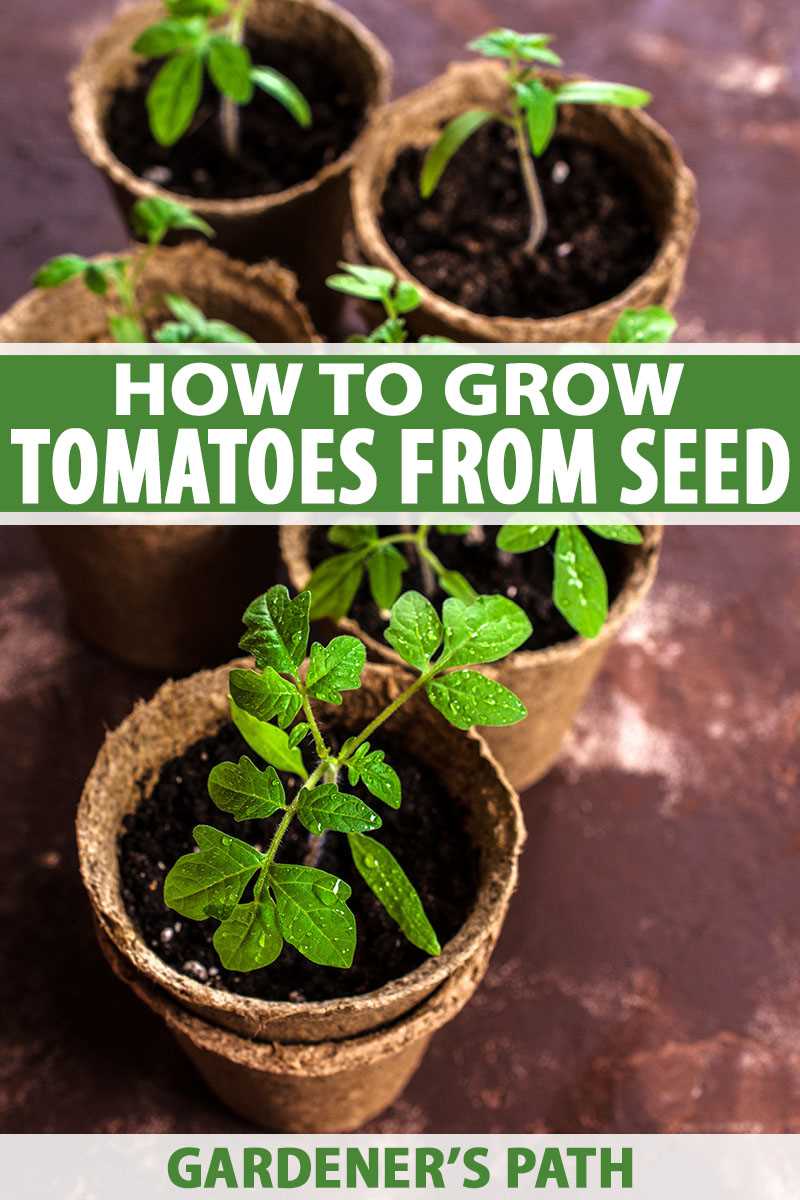
Planting seedlings is an essential step in gardening. Whether you’re starting a new garden or adding to an existing one, it’s important to do it right to ensure the success of your plants. Unfortunately, many beginners make common mistakes that can lead to poor growth or even the death of their seedlings. In this article, we will discuss six basic rules for planting a seedling to help you avoid these common mistakes and give your plants the best possible start.
Rule #1: Choose the Right Location
Start by selecting the right location for your seedlings. Consider the needs of your plants, such as their sunlight and soil requirements. Most vegetables and flowers require at least six hours of direct sunlight per day, so choose a spot that receives adequate sunlight. Additionally, ensure that the soil is well-drained and fertile to provide your seedlings with the necessary nutrients.
Rule #2: Prepare the Soil
Before planting your seedlings, prepare the soil properly. Remove any weeds or grass from the area and loosen the soil with a garden fork or tiller. This will help promote root growth and allow the seedlings to establish themselves more easily. If the soil is compacted, consider adding organic matter like compost or aged manure to improve its structure and fertility.
Rule #3: Dig the Right Sized Hole
When planting a seedling, it’s important to dig a hole that’s wide and deep enough to accommodate its roots. Gently place the seedling in the hole, making sure that the top of the root ball is level with or slightly above the soil surface. Avoid planting the seedling too deep, as this can lead to stem rot or suffocation of the roots.
Rule #4: Water Thoroughly
After planting, it’s crucial to water your seedlings thoroughly. This will help settle the soil and ensure that the roots make good contact with the surrounding soil. Use a gentle stream of water to avoid dislodging the seedling or causing soil erosion. Keep the soil consistently moist, but not waterlogged, to promote healthy root development.
Rule #5: Mulch and Stake if Necessary
Mulching is an important step to protect your seedlings from weeds, retain moisture, and regulate soil temperature. Apply a layer of organic mulch like straw, wood chips, or shredded leaves around the base of the seedling, being careful to leave a small gap around the stem to prevent rot. If your seedlings are floppy or prone to wind damage, consider staking them for additional support.
Rule #6: Monitor and Adjust
Lastly, regularly monitor your seedlings and make necessary adjustments. Check for signs of pests, diseases, or nutrient deficiencies and take appropriate action to address them promptly. Keep an eye on the moisture level of the soil and adjust your watering schedule accordingly. Remember, each plant is unique, so it’s essential to be observant and responsive to their individual needs.
By following these six basic rules for planting a seedling, you’ll be well on your way to a successful and thriving garden. Remember to choose the right location, prepare the soil, dig the right-sized hole, water thoroughly, mulch and stake if necessary, and monitor and adjust as needed. With proper care and attention, your seedlings will grow into healthy and productive plants that will bring joy and beauty to your garden.
Common Mistakes to Avoid When Planting a Seedling
Planting a seedling can be a rewarding experience, but it’s important to avoid common mistakes that can hinder the growth and health of your plants. Here are some common mistakes to avoid when planting a seedling:
1. Planting too deep
One common mistake is planting the seedling too deep in the soil. This can prevent the roots from getting enough oxygen and lead to poor growth. Make sure to plant the seedling at the same depth as it was in the original container.
2. Overwatering
Overwatering is another common mistake that can be harmful to seedlings. It can cause the roots to rot and inhibit proper root development. Make sure to water your seedlings only when the top few inches of soil are dry to the touch.
3. Ignoring the soil quality
The quality of the soil is crucial for the growth of seedlings. Avoid planting seedlings in poor soil that lacks nutrients and drains poorly. Test the soil’s pH and amend it accordingly to create a favorable environment for your plants.
4. Crowding the seedlings
Planting seedlings too close together can lead to overcrowding, competition for resources, and increased susceptibility to disease. Follow the recommended spacing guidelines for each type of seedling to give them enough room to grow.
5. Failing to harden off seedlings
Seedlings grown indoors or in a greenhouse need to be gradually acclimated to outdoor conditions before planting them in the garden. Failing to harden off seedlings can shock them and stunt their growth. Gradually expose them to outdoor conditions by placing them outside for a few hours each day, increasing the time gradually over a week.
6. Neglecting to provide support
Some seedlings, such as tomatoes or peas, require support as they grow. Neglecting to provide support can result in plants sprawling on the ground and a decreased yield. Install stakes, trellises, or cages to support your seedlings and promote proper growth.
Avoiding these common mistakes can go a long way in ensuring the success of your seedlings. Remember to carefully follow planting instructions and provide the necessary care to help your plants thrive.
Choosing the Wrong Location
Choosing the right location for planting a seedling is crucial for its growth and overall health. However, many people make the mistake of selecting the wrong spot, which can lead to the poor development of the plant or even its death.
Here are some common errors to avoid when choosing a location for your seedling:
- Insufficient sunlight: Plants need an adequate amount of sunlight to carry out photosynthesis, which is essential for their growth. Make sure to choose a spot that receives at least 6 to 8 hours of direct sunlight per day.
- Poor soil quality: Plants require nutrient-rich soil to thrive. Avoid areas with compacted soil or heavy clay, as they can hinder proper root development. Consider testing the soil pH and fertility levels before planting.
- Inadequate drainage: Excess water can be detrimental to plant roots and can lead to root rot. Ensure that the chosen location has good drainage to prevent waterlogging.
- Proximity to other plants: Avoid planting your seedling too close to other plants, as they may compete for resources such as water, nutrients, and sunlight. Consider the eventual size of the plant and provide enough space for it to grow.
- Exposure to strong winds: Wind can cause damage to young seedlings by uprooting them or breaking their delicate stems. Choose a location that offers some protection from strong winds, such as near a wall or fence.
- Lack of access: Ensure that the chosen location is easily accessible for watering, fertilizing, and other care activities. An inconvenient location may result in neglect and poor plant health.
By avoiding these common mistakes and carefully selecting the right location, you can give your seedling a better chance of thriving and growing into a healthy plant.
Improper Soil Preparation
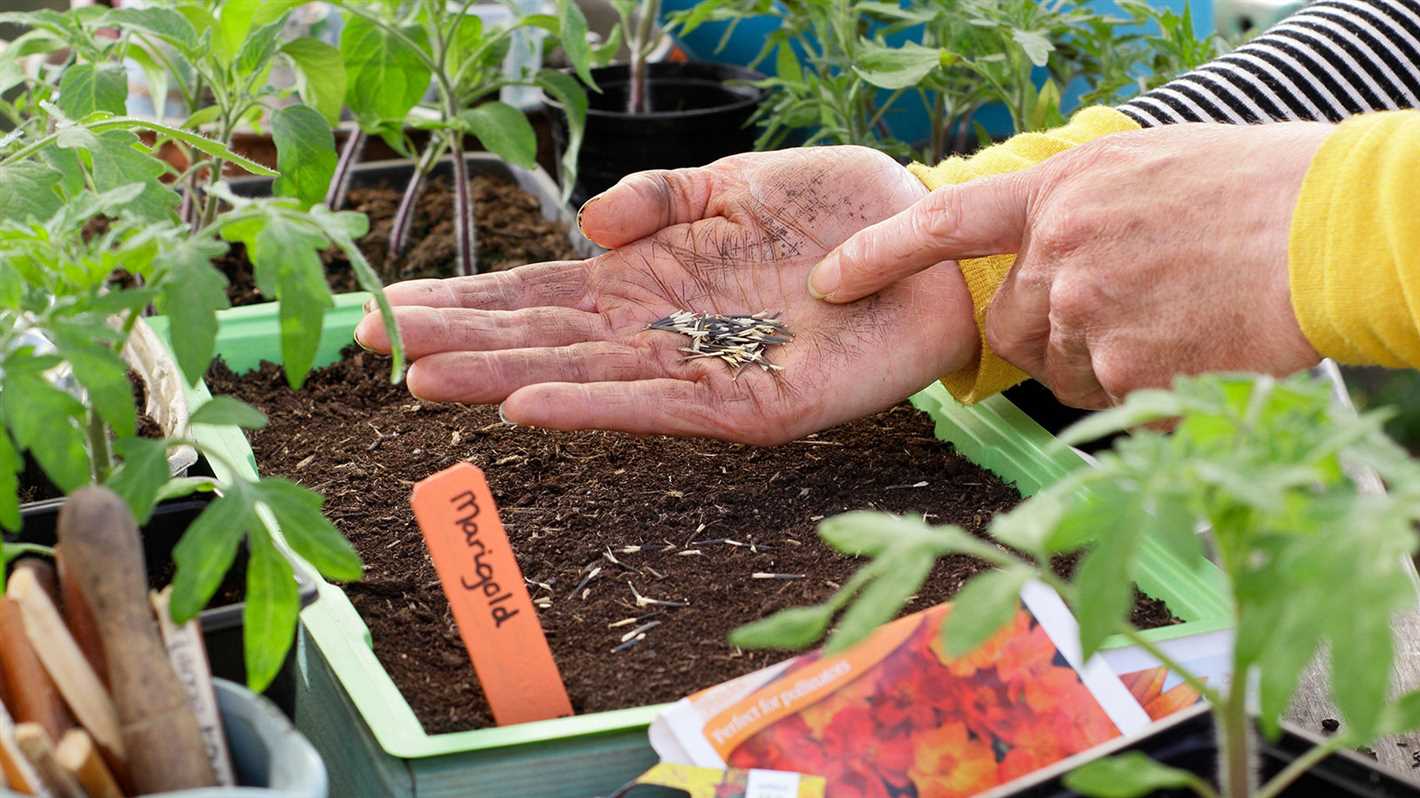

One of the most common mistakes when planting a seedling is improper soil preparation. The condition of the soil plays a crucial role in the growth and development of the plants, so it is important to ensure that the soil is properly prepared before planting.
Importance of Soil Preparation
Soil preparation involves creating a suitable environment for the seedling to establish its root system and grow effectively. Some key reasons for proper soil preparation include:
- Improved Drainage: The soil needs to have good drainage so that excess water doesn’t collect around the roots. This can lead to root rot and other issues that can harm the plant.
- Increased Nutrient Availability: Proper soil preparation helps to break down organic matter and release nutrients that are essential for plant growth. It also creates a favorable pH level for nutrient uptake.
- Reduced Weed Competition: Preparing the soil properly before planting helps to eliminate weeds and prevent their growth, reducing competition for nutrients and resources.
- Enhanced Soil Structure: Soil preparation promotes good soil structure, allowing for adequate oxygen penetration and root development. It also prevents soil compaction, which can hinder plant growth.
Steps for Proper Soil Preparation
Follow these steps to ensure proper soil preparation before planting a seedling:
- Remove Weeds: Clear the area of any existing weeds or vegetation to prevent competition and allow the seedling to thrive.
- Loosen the Soil: Use a garden fork or a tiller to loosen the soil. This improves aeration and drainage, making it easier for the seedling’s roots to penetrate the soil.
- Amend the Soil: Add organic matter, such as compost or well-rotted manure, to improve soil fertility and structure.
- Test the Soil: Conduct a soil test to determine its pH level and nutrient content. This will help you identify any deficiencies or imbalances that need to be addressed.
- Adjust the Soil: Based on the soil test results, adjust the soil pH and nutrient levels by adding appropriate amendments.
- Level the Soil: Rake the soil to create a smooth and level surface for planting the seedling.
Proper soil preparation is essential for the successful growth of seedlings. By following these steps, you can create an optimal environment for your plants to thrive and avoid common mistakes that can hinder their development.
Over or Underwatering
Watering is a crucial aspect of growing healthy seedlings. However, over or underwatering can easily damage or even kill your plants. It is essential to find the right balance and provide your seedlings with adequate moisture for optimal growth.
Overwatering
Overwatering occurs when you give your seedlings too much water. This can lead to a lack of oxygen in the soil, which can suffocate the roots and cause root rot. Here are some signs that you may be overwatering your seedlings:
- The soil is constantly wet or soggy
- The leaves are yellowing or wilting
- There is mold or fungus growing on the soil surface
- Roots are mushy or smell rotten
If you notice any of these signs, reduce the amount of water you are giving to your seedlings. Allow the soil to dry out slightly between waterings to ensure proper air circulation and prevent root problems.
Underwatering
Underwatering, on the other hand, is when your seedlings do not receive enough water. This can cause stunted growth, wilting, and eventually, the death of your plants. Here are some signs that your seedlings may be underwatered:
- The soil is dry and crumbly
- The leaves are yellow or brown and crispy
- Seedlings appear weak and frail
- Growth is slow or nonexistent
If you suspect underwatering, increase the amount of water you give to your seedlings. Ensure that the soil is thoroughly moistened, but not waterlogged. You can use your finger to check the moisture level by sticking it about an inch into the soil. If it feels dry, it’s time to water.
Remember, each plant has different water requirements, so it’s crucial to research the specific needs of your seedlings. Pay attention to the environmental conditions, such as temperature and humidity, as they can also affect the water needs of your plants. By finding the right balance and closely monitoring your seedlings, you can avoid the common mistakes of over or underwatering and help them thrive.
Failure to Consider Sunlight Requirements
One common mistake that beginners often make when planting seedlings is failing to consider the sunlight requirements of the plants. Different plants have different needs when it comes to sunlight, and not providing them with the right amount can lead to stunted growth or even death.
Why is sunlight important for seedlings?
Sunlight is essential for seedlings as it helps in the process of photosynthesis. During photosynthesis, plants convert sunlight into energy, which is crucial for their growth and development. Sunlight also helps in the production of chlorophyll, the pigment responsible for giving plants their green color.
How to determine the sunlight requirements?
Before planting a seedling, it is important to research and understand the sunlight requirements of the particular plant. Some plants thrive in direct sunlight, while others prefer partial shade or full shade.
Providing the right amount of sunlight
Once you have determined the sunlight requirements of your seedlings, it is important to provide them with the right amount of sunlight. This can be done by placing them in an area where they can receive the required amount of sunlight.
If the plant requires full sunlight, it should be placed in an area that receives at least 6-8 hours of direct sunlight every day. If the plant requires partial shade, it should be placed in an area where it can receive some direct sunlight for a few hours, but also have some shade during the day.
Using shade cloth or other methods
In cases where the available sunlight does not meet the requirements of the plant, you can use shade cloth or other methods to create the ideal conditions. Shade cloth can be used to reduce the amount of direct sunlight, while still allowing some light to reach the plant.
Conclusion
Failure to consider the sunlight requirements of seedlings can result in poor growth or even the death of the plants. It is important to research and understand the sunlight requirements of a specific plant before planting it, and provide the right amount of sunlight to ensure healthy growth and development.
Neglecting to Mulch
One common mistake when planting seedlings is neglecting to apply mulch. Mulch is a layer of organic or inorganic material that is spread over the soil surface around the base of the seedling. It serves several important purposes.
Benefits of Mulching
- Conservation of moisture: Mulch helps to retain moisture in the soil by reducing evaporation. This is especially important for young seedlings that have shallow root systems and are more susceptible to drying out.
- Temperature regulation: Mulch acts as a thermal insulator, protecting the seedlings from extreme temperature fluctuations. It keeps the soil cooler in hot weather and warmer in cold weather.
- Weed suppression: Mulch creates a barrier that helps to suppress the growth of weeds. It blocks sunlight from reaching weed seeds, preventing them from germinating and competing with the seedling for nutrients and water.
- Prevention of soil erosion: Mulch helps to prevent soil erosion by reducing the impact of raindrops on the soil surface. It also helps to absorb and retain water, preventing it from washing away the topsoil.
Types of Mulch
There are several types of mulch that can be used when planting seedlings:
- Organic mulch: Organic mulch is made from natural materials such as wood chips, straw, leaves, or grass clippings. It breaks down over time, adding organic matter to the soil and improving its fertility.
- Inorganic mulch: Inorganic mulch is made from materials such as plastic, rubber, or rocks. It does not break down and can last for several years. Inorganic mulch is often used in areas where a long-lasting mulch is desired or where organic material is not readily available.
How to Apply Mulch
When applying mulch around seedlings, follow these steps:
- Carefully remove any weeds or grass from the area around the seedling.
- Spread a layer of mulch around the base of the seedling, making sure not to cover the stem or crown.
- Avoid piling mulch directly against the stem, as this can create a moist environment where pests and diseases can thrive.
- Maintain a thickness of 2-4 inches (5-10 cm) of mulch around the seedling.
- Leave a small gap between the mulch and the stem to allow air circulation.
- Refresh the mulch layer as needed, usually once or twice a year, to maintain its effectiveness.
By properly mulching your seedlings, you can provide them with the necessary moisture, temperature regulation, weed suppression, and soil erosion prevention, helping them to grow and thrive.
Ignoring Pest and Disease Prevention
Growing healthy plants requires more than just proper planting techniques and providing suitable growing conditions. Ignoring pest and disease prevention can lead to the failure of your seedling and potential damage to other plants in your garden. It is important to take proactive measures to protect your seedlings from these threats.
Common Pests
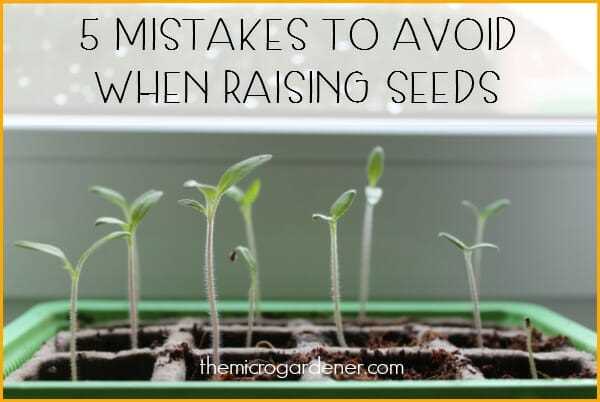

There are various pests that can wreak havoc on your seedlings. Some common pests include:
- Aphids: These small insects feed on the sap of plants and can cause stunted growth and distorted leaves.
- Slugs and snails: These mollusks can eat through seedlings, causing holes in the leaves and stems.
- Caterpillars: Caterpillars can chew through leaves, leaving behind skeletonized foliage.
Disease Prevention
Plant diseases can also pose a major threat to your seedlings. Here are some common diseases and ways to prevent them:
- Root rot: Ensure proper drainage and avoid overwatering to prevent root rot.
- Powdery mildew: Provide adequate air circulation and avoid overcrowding to minimize the risk of powdery mildew.
- Leaf spot: Avoid wetting the foliage when watering to prevent leaf spot diseases.
Preventive Measures
To prevent pest and disease issues, here are some preventive measures you can take:
- Clean planting materials: Use clean pots, trays, and tools to minimize the risk of introducing pests and diseases.
- Monitor regularly: Keep a close eye on your seedlings for any signs of pests or diseases. Early detection allows for prompt action.
- Remove affected plants: If you notice any signs of pests or diseases, remove the affected plants immediately to prevent the spread.
- Natural remedies: Consider using natural pest control methods such as beneficial insects, neem oil, or homemade sprays.
- Crop rotation: Rotate your crops each year to disrupt pest life cycles and reduce the risk of disease buildup.
- Clean garden area: Keep your garden clean and free from debris, as pests and diseases can overwinter in dead plant material.
By taking these preventive measures and staying vigilant, you can significantly reduce the incidence of pest and disease problems in your seedlings, ensuring their healthy growth and success.
Planting at the Wrong Time
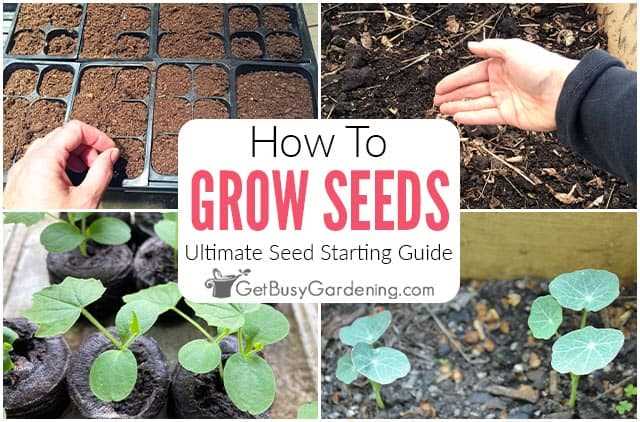

Planting at the wrong time can have detrimental effects on the growth and development of your seedlings. It is important to consider the specific requirements of each plant and choose the appropriate time for planting.
1. Research the Ideal Planting Time
Before planting your seedlings, take the time to research the ideal planting time for each specific plant. Different plants have different preferences when it comes to soil temperature, daylight hours, and weather conditions. Consider the climate in your region and the specific needs of the plant to determine the best time for planting.
2. Read the Planting Instructions
Always read the planting instructions provided by seed or nursery companies. These instructions often include specific guidelines for when to plant the seeds or seedlings. Follow these instructions carefully to ensure the best chances of success.
3. Consider Frost Dates
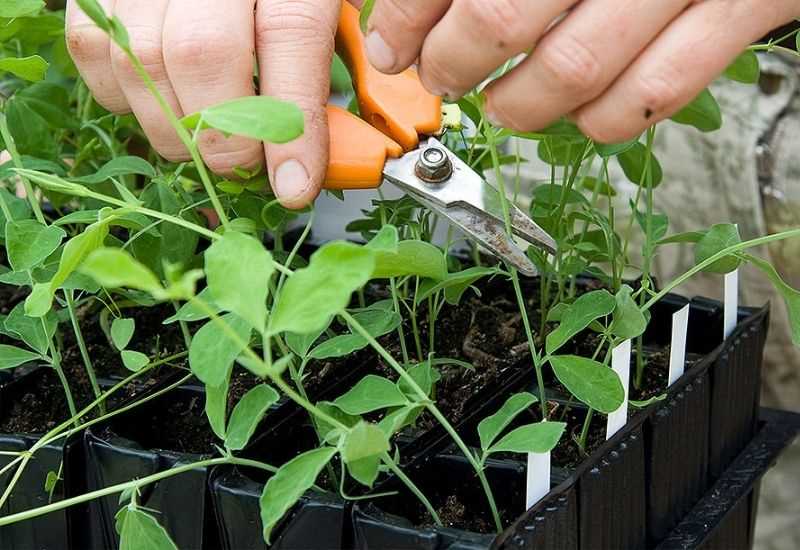

Frost dates are an important factor to consider when planting seedlings. Frost can damage or kill tender seedlings, so it is important to avoid planting too early in the spring or too late in the fall. Research the average frost dates for your region and plan your planting accordingly.
4. Think about Daylight Hours
The amount of daylight hours can also affect the growth of your seedlings. Some plants require longer or shorter daylight hours to thrive. Consider the specific requirements of each plant and plan your planting time accordingly. For example, plants that require shorter daylight hours may be better suited for planting in the fall.
5. Avoid Planting in Extreme Weather
Extreme weather conditions, such as excessive heat or cold, can be stressful for young seedlings. Avoid planting during periods of extreme weather to give your seedlings the best chance of survival. Instead, wait for more moderate weather conditions to ensure successful growth.
6. Adapt to Microclimates
Microclimates are small areas within a region that have slightly different climates than the surrounding area. Take advantage of microclimates to extend your planting window. For example, if your region has a microclimate with milder temperatures, you may be able to plant earlier in the spring or later in the fall to get a longer growing season.
By avoiding the common mistake of planting at the wrong time, you can give your seedlings the best chance of successful growth and development. Take the time to research the ideal planting time for each specific plant and plan your planting accordingly.
Improper Pruning and Training
Pruning and training are essential practices for maintaining healthy and well-structured plants. However, improper pruning and training can lead to various problems and hinder the growth and development of seedlings.
1. Pruning at the wrong time: It’s important to prune seedlings at the appropriate time to avoid causing stress and damage. Pruning during the dormant season or late in the growing season can negatively impact the plant’s ability to recover and may result in stunted growth.
2. Incorrect pruning cuts: Improper pruning cuts can weaken the plant and leave it vulnerable to disease and pests. Always make clean cuts at a slight angle just above a bud or lateral branch to encourage healthy growth.
3. Over-pruning: Over-pruning can remove too much foliage and disrupt the balance between the plant’s root system and its above-ground parts. This can lead to reduced vitality and hinder the plant’s ability to produce food through photosynthesis.
4. Lack of training support: Without proper support, seedlings may grow unevenly and develop weak stems that are prone to breakage. Use stakes, cages, or trellises to support and train seedlings, ensuring they grow upright and have proper airflow and sunlight exposure.
5. Improper thinning: Thinning is necessary to remove overcrowded seedlings and allow the remaining plants to grow more vigorously. However, improper thinning can damage the root system of neighboring seedlings and disrupt the overall balance of the planting area.
6. Neglecting pruning and training: Regular and judicious pruning and training are crucial for maintaining the shape, size, and overall health of plants. Neglecting these practices can lead to tangled and unruly growth, reduced flowering or fruiting, and increased susceptibility to pests and diseases.
By avoiding these common mistakes and following proper pruning and training techniques, you can ensure the successful growth and development of your seedlings. These practices will promote healthy foliage, balanced growth, and increased productivity in your garden.
Question-answer:
What are the common mistakes people make when planting seedlings?
Some common mistakes people make when planting seedlings include planting them too deeply, not providing enough water, planting them too close together, not preparing the soil properly, not giving them enough sunlight, and not providing proper support.
Why is it important not to plant seedlings too deeply?
It is important not to plant seedlings too deeply because this can restrict the growth of the plant’s roots and can cause them to rot. Planting seedlings at the proper depth ensures that the roots have access to the necessary oxygen and nutrients.
What happens if seedlings are not given enough water?
If seedlings are not given enough water, they can become dehydrated and wilt. This can stunt their growth and even lead to their death. It is important to water seedlings regularly and ensure that the soil is evenly moist.
Why is it a mistake to plant seedlings too close together?
Planting seedlings too close together can lead to overcrowding. This can restrict the airflow between the plants and create a favorable environment for diseases and pests to develop. It is important to give seedlings enough space to grow and thrive.
How should the soil be prepared before planting seedlings?
Before planting seedlings, the soil should be loosened and amended with organic matter such as compost or peat moss. This helps improve the soil’s structure, drainage, and nutrient content, providing a better environment for the seedlings to establish their roots.
What can happen if seedlings are not given enough sunlight?
If seedlings are not given enough sunlight, they can become weak and leggy as they stretch towards the light. This can make them more susceptible to damage and disease. Adequate sunlight is essential for the proper development and growth of seedlings.
Why is providing proper support important for seedlings?
Providing proper support for seedlings is important because it helps prevent them from falling over or getting damaged by strong winds. Staking or using plant supports can help keep the seedlings upright and protect them from potential harm.







